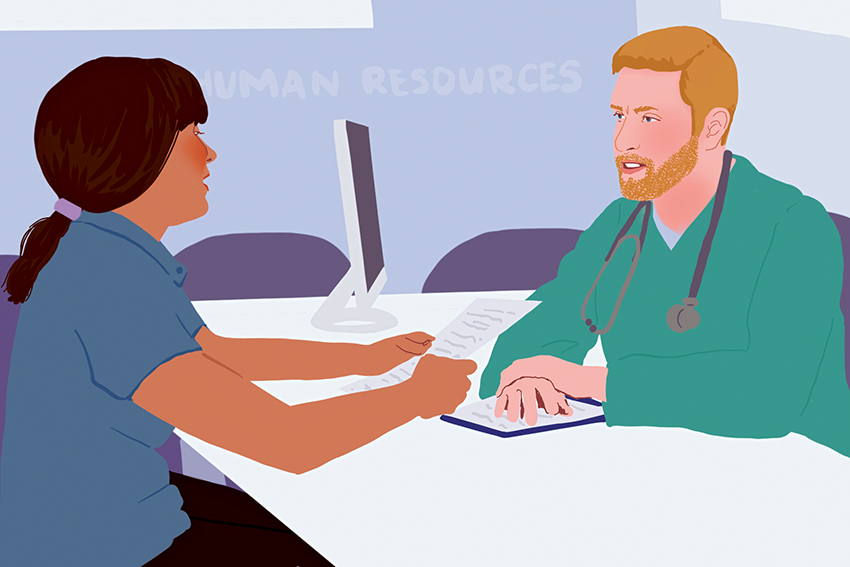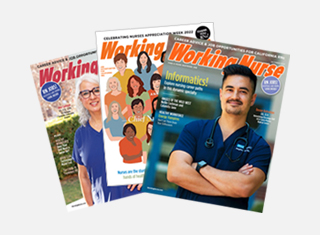Healthy Workforce
Documenting Workplace Bullying
Creating a paper trail is your best defense against toxic behavior

Unit manager Jordan struggled with recurring issues involving his charge nurse Alex, whose aggressive language had led to the departure of several staff members. Finally, Jordan scheduled a meeting with his HR rep to discuss firing Alex. However, after reviewing Jordan’s scant doc-umentation, the HR rep warned him that there wasn’t enough evidence to justify termination. Jordan left the meeting frustrated.
The first step in effectively addressing and stopping bullying and incivility in the workplace is to document those behaviors and report them if necessary.
Defining Incivility and Bullying
Incivility is unkind, inappropriate behavior, and can take many forms: mocking someone, gossiping, or unjustly assigning undesirable tasks as a punishment or a sign of dislike.
Bullying is a pattern of disruptive actions intended to cause harm. This can include harassment, sabotage (e.g., setting someone up for failure by withholding critical information), constant insults or criticism, or even physical intimidation or violence. While not all incivility rises to the level of bullying, its cumulative effects can be equally damaging.
Write it Down
If you experience bullying or incivility, take a moment to create a written record of what happened. Here are some pointers for effective documentation:
• Be specific. Record the date, time, and location of each incident. Describe the behavior observed, the individuals involved, and any witnesses present.
• Use objective language. Stick to factual descriptions rather than subjective opinions. For example, instead of writing, “She was rude,” record what the individual actually said — e.g., ”She told him, ‘You’re incompetent and shouldn’t be a nurse.’”
• Explain the impact. Detail any immediate effects of the behavior, such as emotional distress, interference with work duties, or potential risks to patient safety.
• Preserve evidence. For example, if the behavior involves written communications, such as emails or texts, keep copies of those messages as part of your documentation.
When to Involve Management
You should notify your manager if any of the following apply:
• There’s a persistent pattern. For instance, someone raising their voice in a stressful situation might not be worth reporting, but a pattern of abusive profanity is.
• You can’t resolve it yourself. If calmly and politely addressing the perpetrator doesn’t lead to change in behavior, or if you’re uncomfortable confronting them directly, involving management is the appropriate next step.
• Safety is threatened. If the behavior puts you, other staff, or patients at risk, you need to report it immediately.
Why Create a Record
Accurate documentation of bad behavior serves several purposes:
• Establishing patterns. Recording each incident helps to identify patterns of negative behavior that need to be addressed.
• Providing evidence. Having detailed written notes helps to substantiate the claim and encourages management or human resources to take action.
• Self-protection. Documentation safeguards you in situations where your performance or behavior are questioned, or where you might face retaliation for reporting.
When You Report
Set an appointment to meet your manager and consider the following:
• Follow protocol. Adhere to your organization’s policies and procedures for reporting workplace incivility.
• Present your documentation. Lay out your records, being sure to keep copies for yourself.
• Describe The issue clearly. Calmly highlight any patterns you’ve observed and stress the impact of the behavior.
• Explain steps you’ve taken. For instance, you might say, “I asked her not to use that language where patients can hear her.”
By documenting and reporting incidents, nurses can take the first crucial step towards eradicating bullying in the workplace.
RENEE THOMPSON, RN, DNP, FAAN, is the CEO and founder of the Healthy Workforce Institute (healthyworkforceinstitute.com).
In this Article: Bullying and Incivility


